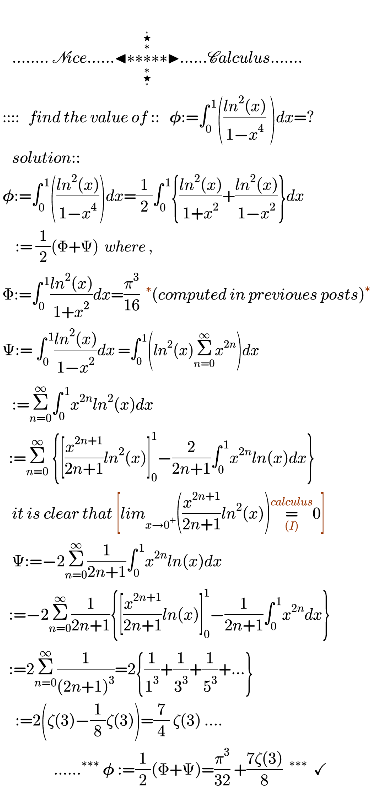
AllQuestion and Answers: Page 778
Question Number 141446 Answers: 1 Comments: 0
Question Number 141444 Answers: 0 Comments: 0

Question Number 141492 Answers: 0 Comments: 1

Question Number 141437 Answers: 0 Comments: 0

Question Number 141435 Answers: 1 Comments: 0
Question Number 141431 Answers: 2 Comments: 0
Question Number 141419 Answers: 2 Comments: 0
Question Number 141409 Answers: 1 Comments: 0
Question Number 141407 Answers: 2 Comments: 0
Question Number 141405 Answers: 1 Comments: 0
Question Number 141423 Answers: 1 Comments: 0
Question Number 141400 Answers: 3 Comments: 0
Question Number 141398 Answers: 0 Comments: 0

Question Number 141395 Answers: 1 Comments: 0
Question Number 141365 Answers: 1 Comments: 0
Question Number 141360 Answers: 0 Comments: 1
$$\int_{\mathrm{0}} ^{\pi/\mathrm{2}} \sqrt{{cosxsenx}}{dx} \\ $$
Question Number 141359 Answers: 0 Comments: 2

Question Number 141356 Answers: 2 Comments: 0
Question Number 141362 Answers: 1 Comments: 0
Question Number 141352 Answers: 1 Comments: 0

Question Number 141346 Answers: 1 Comments: 0

Question Number 141345 Answers: 0 Comments: 0
Question Number 141340 Answers: 0 Comments: 0
Question Number 141336 Answers: 2 Comments: 0
$$\int\mathrm{sin}\:\left(\mathrm{ln}\:\left({x}\right)\right){dx}=?\:\:{Please} \\ $$
Question Number 141417 Answers: 2 Comments: 0
Question Number 141414 Answers: 0 Comments: 1

Pg 773 Pg 774 Pg 775 Pg 776 Pg 777 Pg 778 Pg 779 Pg 780 Pg 781 Pg 782
